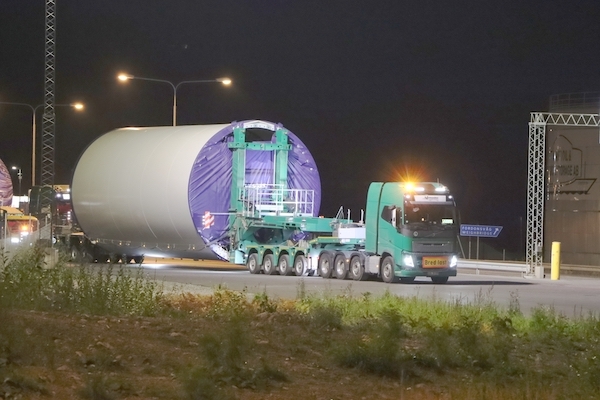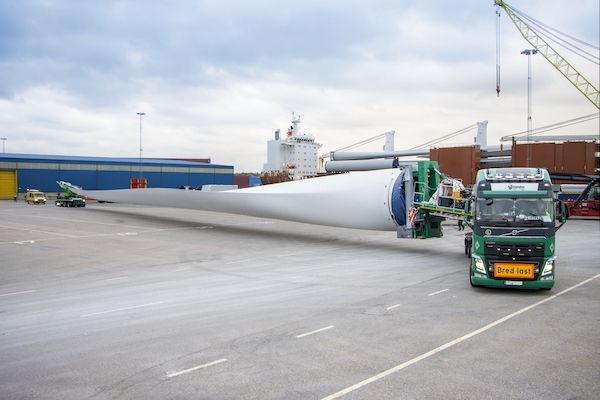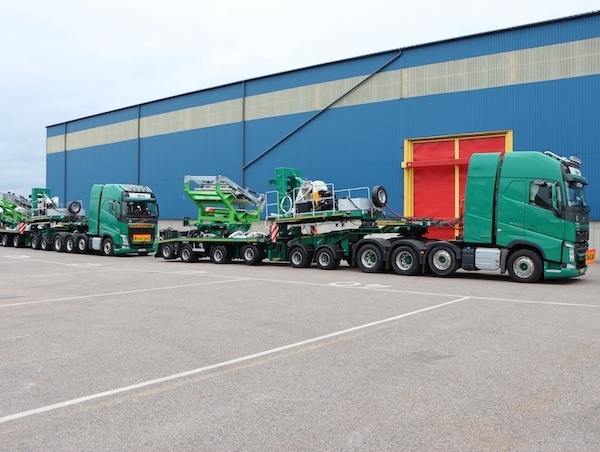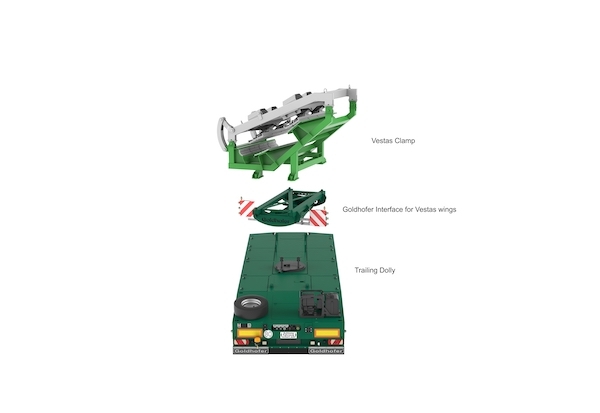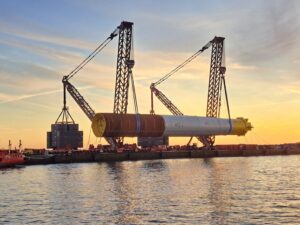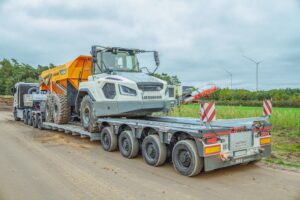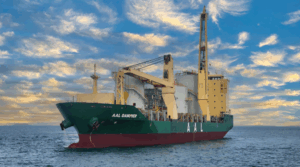P. Schwandner Logistik + Transport GmbH has added a number of new Goldhofer transportation solutions to its special vehicle fleet. That includes three »BLADES« trailers for the transportation of turbine blades with a length of more than 80 meters. The hydraulically steerable trailing dollies are fitted with interface, a new hydraulic blade tip carrier certified by Vestas. To meet today’s increased requirements in terms of height, weight and safety when transporting ultra-heavy and voluminous tower components, the expert from the Upper Palatinate region will be placing its trust in Goldhofer’s further developed RA 2-110 tower adapter which can handle tower sections with a weight of up to 110 tons and a diameter of up to 6.8 m. The extra payload comes from the combination of a front bogie in the form of a four-axle dolly with pendulum axles and a heavy-duty THP/SL-S (285) module as the trailing dolly. With this combination, Schwandner is in compliance with the strict specifications of a safety concept for tower transportation co-developed and prescribed by Vestas Wind Energy A/S (Aarhus, Denmark), the world’s largest manufacturer of wind power solutions.
The new Goldhofer solutions for transporting wind turbine components have already proven in a transportation operation performed by Schwandner for Vestas Wind Energy. The Danish market leader was awarded the contract by Stena Renewalbe AB (Stockholm) to build the Riskebo onshore wind farm (39 MW installed capacity) in Sweden with seven EnVentus V162 turbines, with a rated power of 5.6 MW each. With a blade length of around 80 m, this is the largest rotor size in the Vestas portfolio. It is designed for low to moderate wind speed sites, although the turbine also remains operational at high wind speeds. The wind farm is due to be commissioned before the end of 2021. For Schwandner, the task was to transport tower sections and turbine blades from the port in Gävle to Hedemora, about 100 km inland. As some underpasses could not be used due to the 6.3 m diameter of the towers, the itinerary was divided into a northern route for the tower sections and a southern route for the blades. Once all the preparatory measures had been taken, such as temporary road construction over roundabouts, temporary sloping for high curbs, and the removal of traffic signs and traffic lights, the extra-long and voluminous components of the EnVentus turbines were transported to their destination in just a few days.



